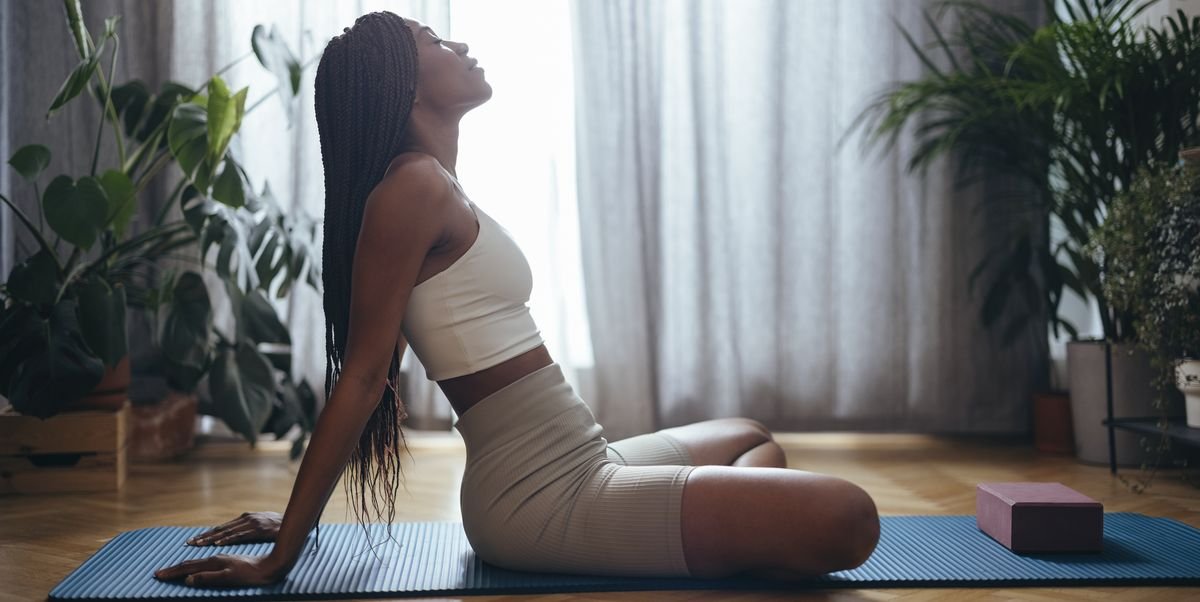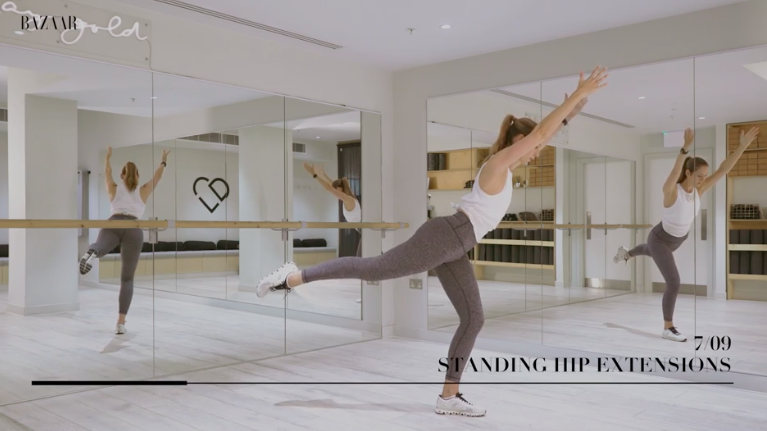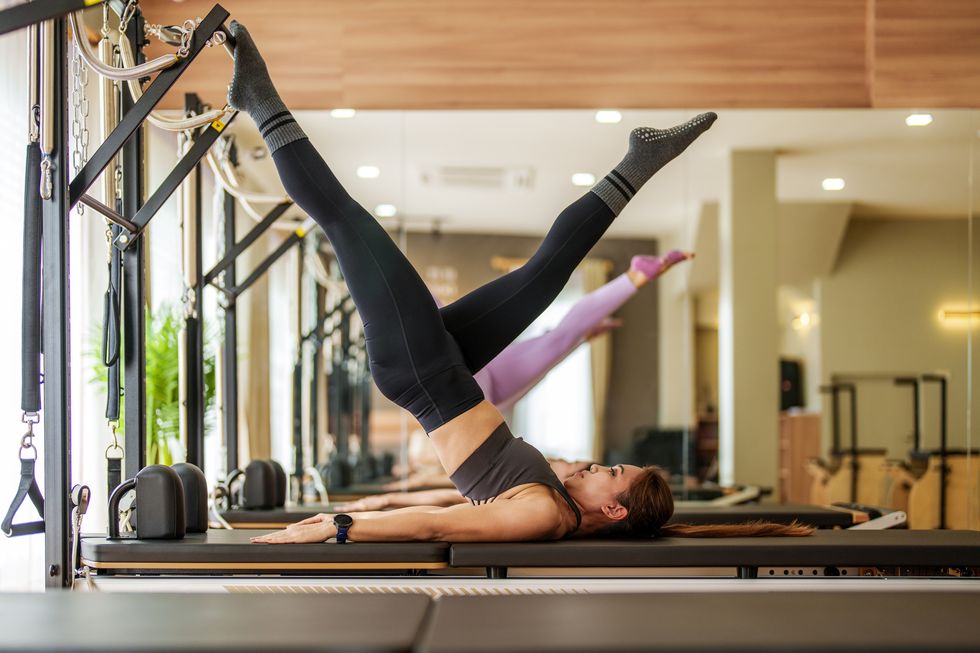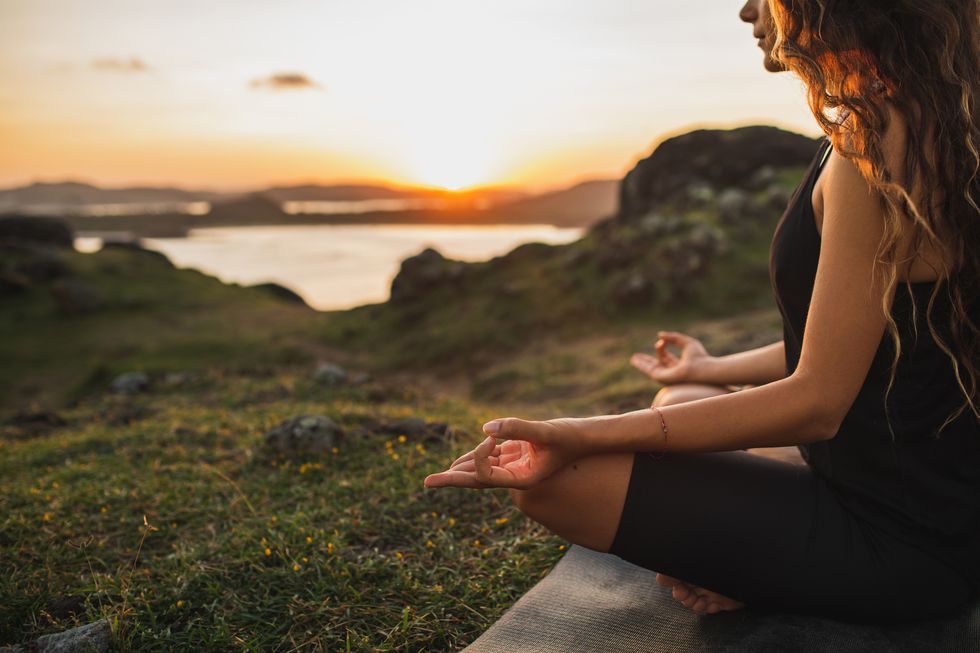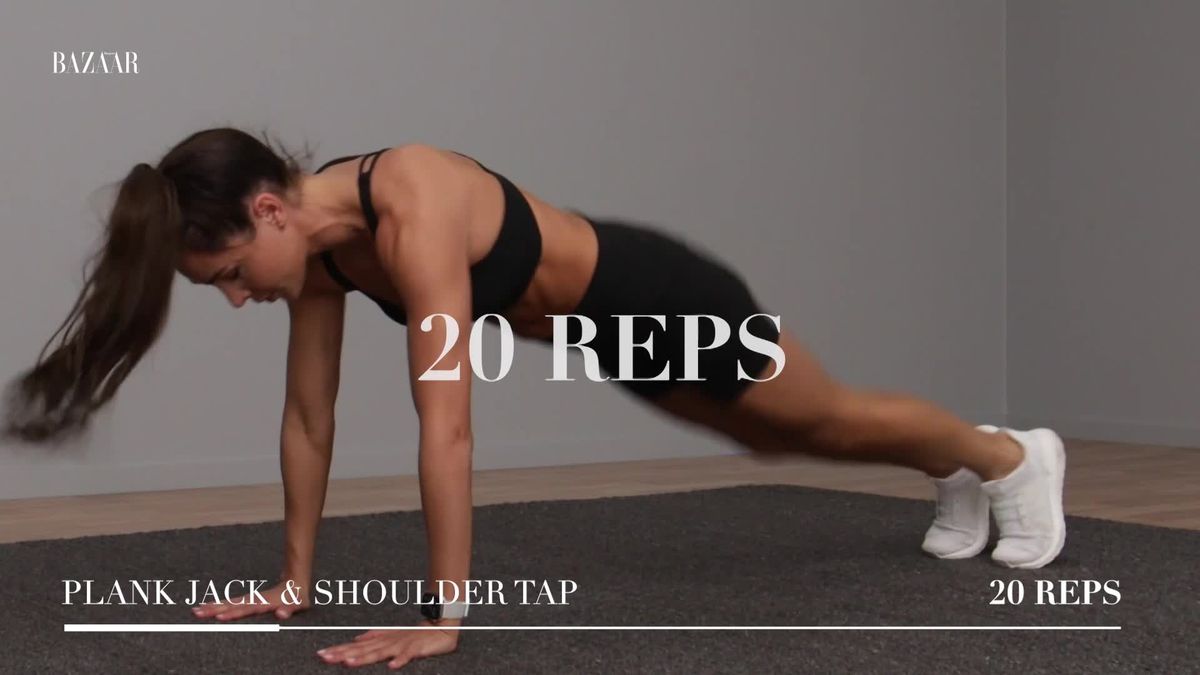One is a comprehensive discipline that originated in ancient India, and the other is a specific body system devised by German anatomists in the early 20th century. While there may be a lot of crossover between yoga and Pilates, the two are very different in nature.
As modern wellness practices, both yoga and Pilates are known for their numerous health benefits, from connecting with your body and relieving stress to improving flexibility, strength, control, and endurance. There are countless interpretations of both disciplines (and one person’s balance class is another person’s cardio), but what unites both is breathing techniques.
Simply put, “The biggest difference between the two,” says Jill Simpson, founder of Yoga, Pilates, Ballet and Barre Studio ebb and flow “Yoga emphasizes the spiritual aspect,” she explains.
Zoe Bertali, yoga teacher at the studio Refinery Let me explain in detail: “Yoga is an integrative health care system that uses breath, movement, and meditation to integrate mind, body, and spirit. It also incorporates elements of philosophy, science, and ethical living. Classes are gentle, nourishing, and There is certainly a yoga practice for everyone. From a variety of traditional forms such as hatha and ashtanga to creative interpretations such as anti-gravity yoga and laughter yoga.
Somatic exercise and yoga coach Nahid de Bergeonne emphasizes that while modern yoga in the West is primarily movement-oriented, the practice has deeper roots. . “Yoga is a spiritual philosophy. Physical practice constitutes only one of the eight parts, or limbs, of the yogic path. The other “limbs” include ethical standards, self-discipline, It includes breathing, transcendence of the senses, concentration, meditation, and a blissful state of self-transcendence. The last limb has to do with meditation. ”
Gemma Forkard, Pilates instructor and founder of Shape Pilates, says, “Typically in yoga, the work is from the inside out, from the mind to the movement.” In Pilates, on the other hand, she sees the challenge coming from the outside in, “from the physical properties of the bones and muscles that are precisely controlled by the brain in each movement.”
One of the biggest differences, she added, is the source of the movement. “In yoga, the emphasis is on opening up the ribcage by moving it more freely. In Pilates, the source is the ‘powerhouse’ commonly known as the ‘core’, but this is often misleading. The powerhouse in Pilates is the center of the body: the torso and abdomen from the lower ribs to the back of the hips, where all movements in Pilates originate and which creates great stability. This is probably why Pilates is often considered. of “Methods to follow in case of back pain or injury”.
Folkard feels that “Yoga and Pilates are both great practices for a comprehensive, full-body workout and complement each other wonderfully.”
Explaining the most popular types of yoga
Here, de Verjone details the main types of yoga and the benefits each offers.
iyengar yoga – This is often done using props. Hold the pose for a certain amount of time, then move on to the next pose. There is no flow between the poses and there is a lot of detail applied to each pose.
ashtanga yoga – This is a faster-paced yoga practice that combines poses with vinyasa (which means “stepping into a special place”) and moves into a step-by-step sequence. Practicing Ashtanga rigorously means moving on to the next series only when you have mastered the previous one.
hatha yoga – This is translated as powerful yoga and is often incorrectly used to describe a gentler yoga. Expect reduced flow and increased floor work.
power yoga – This is borrowed from Ashtanga but removes the rigidity of the set sequence. Poses like arm balances, including handstands, are often sprinkled throughout the class. Think of it as the “fitness” version of yoga.
hot yoga – A series of poses held for a certain period of time in a heated room of approximately 40 degrees. I’m sweating!
restorative yoga – This form of yoga uses props such as bolsters, straps, and belts to hold the position for a period of time. The goal is to relieve muscle tension and regain strength.
yin yoga – This version focuses on mobility and rehabilitation. Hold the pose for a period of time to stretch the structures around your muscles. Yin yoga is influenced by Chinese medicine, and the poses are said to activate the body’s meridians, or energy channels.
Origin of Pilates
“Pilates was founded by Joseph Pilates, who was an anatomist and mechanical genius,” Bertali says. “It’s a body system that uses very specific, targeted exercises to improve strength, flexibility, and posture, with a particular focus on the core. It’s a disciplined habit. , must be done regularly to benefit.”
Pilates teachings tend to have fewer wild variations, with traditionalists preferring mat classes and those seeking a more fitness-focused workout opting for classes on resistance-based reformer machines. However, classical Pilates, which combines mat work and the entire Pilates equipment, is considered to be the truest form of the practice.
Physical benefits of yoga and pilates
If you want to build strength and balance, regular yoga and Pilates are ideal exercises. Many yoga poses and Pilates exercises require you to support your body weight, so they work muscles throughout your body.
Simpson says that while Pilates students primarily work on strengthening their core (as mentioned above), they also gain “the added benefits of muscle tone, overall strength, body control, and flexibility.” states. Bertali adds, “If you like a more structured workout without an aerobic component, this might be the workout for you.”
She also says that yoga helps increase strength and flexibility through your muscles and joints. She says, “In active, fast-paced classes, you are likely to accumulate more heat in your body, which has a greater regenerative effect” and of course “burns calories.”
“In slow practices like yin yoga, by holding poses for long periods of time, you begin to work on stretching and moving the fascia, the deeper connective tissue around your muscles and joints, ultimately improving flexibility. will increase further.”
The mental benefits of yoga and pilates
According to MindBody research, 70% of people who practice yoga or Pilates is said to reduce stress. Both practices teach breathing techniques to help combat feelings of stress and anxiety, but both traditionally encourage students to harmonize body, mind, and spirit and focus on self-care.
As a holistic system, yoga is as concerned with the mind and spirit as it is with the body. Simpson says, “Yoga is not only a physical practice, it also includes meditation, and it takes time to connect with your body, breath, and mind, allowing you to slow down in your busy lifestyle and discover yourself.” It gives you an opportunity to focus inward.”
But Bertali feels that in addition to breathing exercises and meditation, the physical postures of yoga can be just as beneficial to the mind. “Yoga is very effective in balancing the nervous system through deeper breathing. It is very detoxifying when done in different positions, hydrates the organs and joints, and brings fresh blood to the body. The concentration required by some poses will help you stay firmly in the moment, free from the distractions of the day, and create a little space in your mind. ”
This also applies to Pilates. “Pilates is a slow-paced training that also focuses on breathing techniques, so it can be very meditative and stress-reducing,” Bertali says.
Simpson adds, “Pilates connects the body and mind. It requires good concentration of the body and breath, with the deep concentration required for advanced Pilates. All of this can improve mental health. It helps,” he adds. However, don’t expect the class to focus on meditation, like a yoga class.
And for both yoga and Pilates, the simple opportunity to take some “me time” is praised as a stress reliever, as MindBody’s Wellness Index shows the following correlations, as with all workouts: This could be another reason. The amount of headspace people get and their overall level of health.
Rehabilitation effects of yoga and Pilates
Both yoga and Pilates are often recommended by doctors and sports therapists as an aid to rehabilitation after injury and as a complement to various high-impact sports.
Bertali explains: “Since both are slow, controlled exercises, they can be used to rehabilitate certain injuries by using targeted postures. They can also be used to rehabilitate certain injuries by using targeted postures. They can also be used to help people recover from depression or trauma, as well as improving body movement and breathing.” The hormonal rebalancing produced by this has a beautiful calming effect on the body and mind.”
Specifically, Simpson feels that Pilates is beneficial for recovery, and that yoga may help prevent sports-related injuries and illnesses. “Pilates is a series of targeted movements that is an adaptable solution when movement and performance are compromised by injury or chronic pain. It is highly effective in reversing bad conditions.”
“Yoga is great for people who play sports or do a lot of running or cycling to help stretch their muscles. Yin yoga can help these people train and recover, slowing down and stretching targeted areas. ,” says Simpson. .
Benefits of yoga and pilates during pregnancy
With special adaptations, both yoga and Pilates are considered safe and highly beneficial during pregnancy.
One of the most popular prenatal practices, yoga can help strengthen your core muscles, relieve back pain, and maintain muscle tone, but it’s also gentle on your joints and relaxing. It’s a gentle exercise that also helps.
Simpson says prenatal classes “work on important areas such as the pelvic floor, neck and shoulder pain, low stamina, and maintaining flexibility. Yoga can improve sleep, reduce stress, and improve your health during pregnancy.” Practicing yoga is highly recommended for pregnant women as it also helps maintain good posture.” In fact, students who are planning to become pregnant report a variety of benefits.
Pilates is considered one of the most effective exercises for prenatal and postnatal women because it targets the muscles that become weak during pregnancy.
Erica Falls, Master Trainer Ten Health & Fitness “During pregnancy, your body is constantly changing. Pilates is an effective and safe way to build the strength and endurance to cope with these changes. It also strengthens your pelvis to aid the natural birth process. It’s also great for keeping you strong – contractions can last for several hours, and your core muscles can quickly become fatigued if you don’t exercise them throughout your pregnancy.
Holly Grant, Pilates expert and founder of Bump Plan, agrees. “Pregnancy is the longest marathon you’ll ever run, and childbirth can be the toughest marathon you’ll ever run,” she says. “Just like before a marathon, it is important to approach pregnancy as strong and capable as possible. You need vascular fitness. Full-body strength to support your growing bump and changing posture during pregnancy.” She therefore feels that increasing physical fitness through Pilates is very important.

